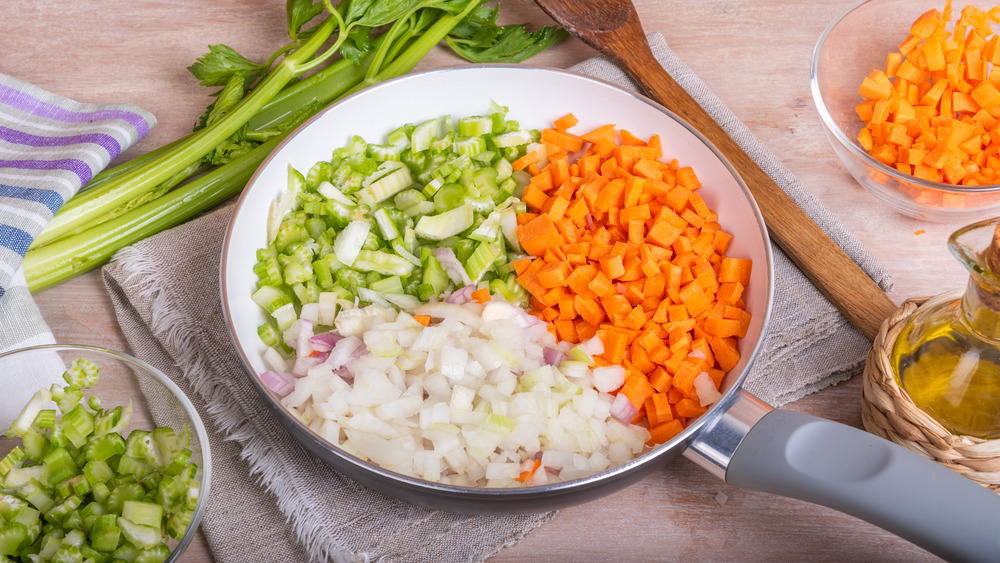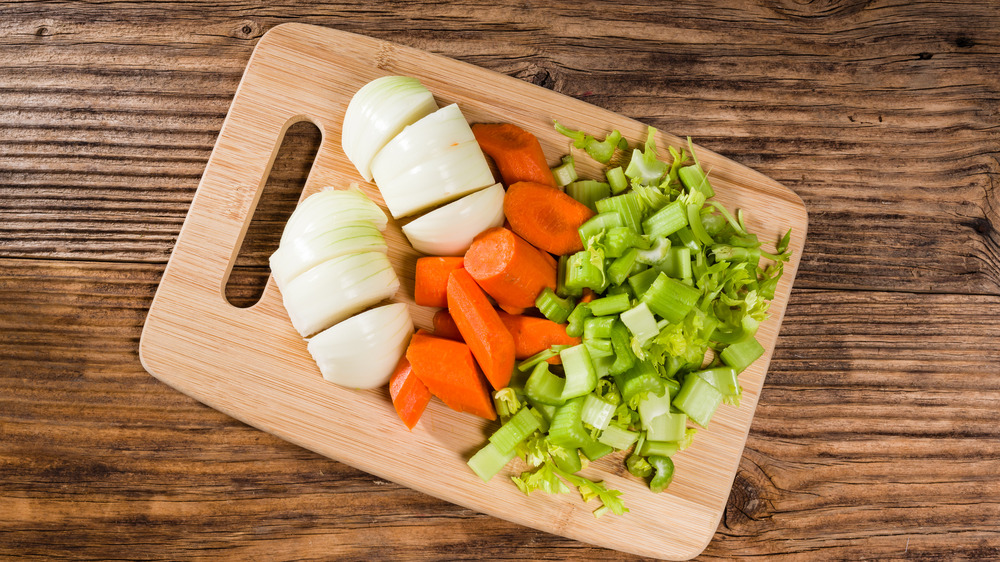What Is Mirepoix And How Do You Use It?
Every seasoned chef has small tricks that help maximize the flavor profile of any dish they are making. World-renowned chefs like Ina Garten, Massimo Bottura, Giada De Laurentiis, and Rachael Ray have all been known to include things that add a special little signature, be it something as simple as a fresh garlic or something more pronounced like a stock.
Although to regular folks, ingredients as simple as onions, carrots, or celery independently shouldn't make that vast of a difference to a dish, chefs know that the combination of these three can make a world of difference. Mirepoix (prounounced meer-PWAH) is what many chefs consider the flavorful harmonic convergence of onions, carrots, and celery, per MasterClass. According to the publication, mirepoix originated in France (as you may have guessed) and has been credited to the cook of Charles-Pierre-Gaston François de Lévis, Duke of Lévis-Mirepoix, in the 1700s. Despite this, Cook's Info notes that it wasn't until the 19th century that the term became more prevalent in cookbooks.
The perfect mirepoix comes down to the ingredients and their ratios
According to The Spruce Eats, mirepoix can be used in stocks, sauces, or soups. When it comes to making traditional mirepoix, you'll need a ratio that is "two parts onions, one part carrots, and one part celery." The Pioneer Woman concurs by stating that it should be about 50-percent onion, 25-percent celery, and 25-percent carrot. When it comes to cooking mirepoix, slow and low is the way to go. MasterClass notes that mirepoix is normally cooked in butter over low heat until it is translucent.
The Spruce Eats details that when prepping mirepoix, it is highly important to cut all the veggies uniformly so that they cook properly. Also note that if you're making something with a quicker cook time like white stock, smaller pieces are better. If you're going to whip up a beef stew, roughly chopping them is the way to go. Why is this important? The publication notes that the smaller the piece, the faster it releases flavor, while the bigger the piece, the slower the flavor release.
Mirepoix has become so popular that different cultures have come up with their own take on it. You can go with either Italy's soffrito, Spain's sofrito, or the South's Cajun Holy Trinity, per MasterClass.

